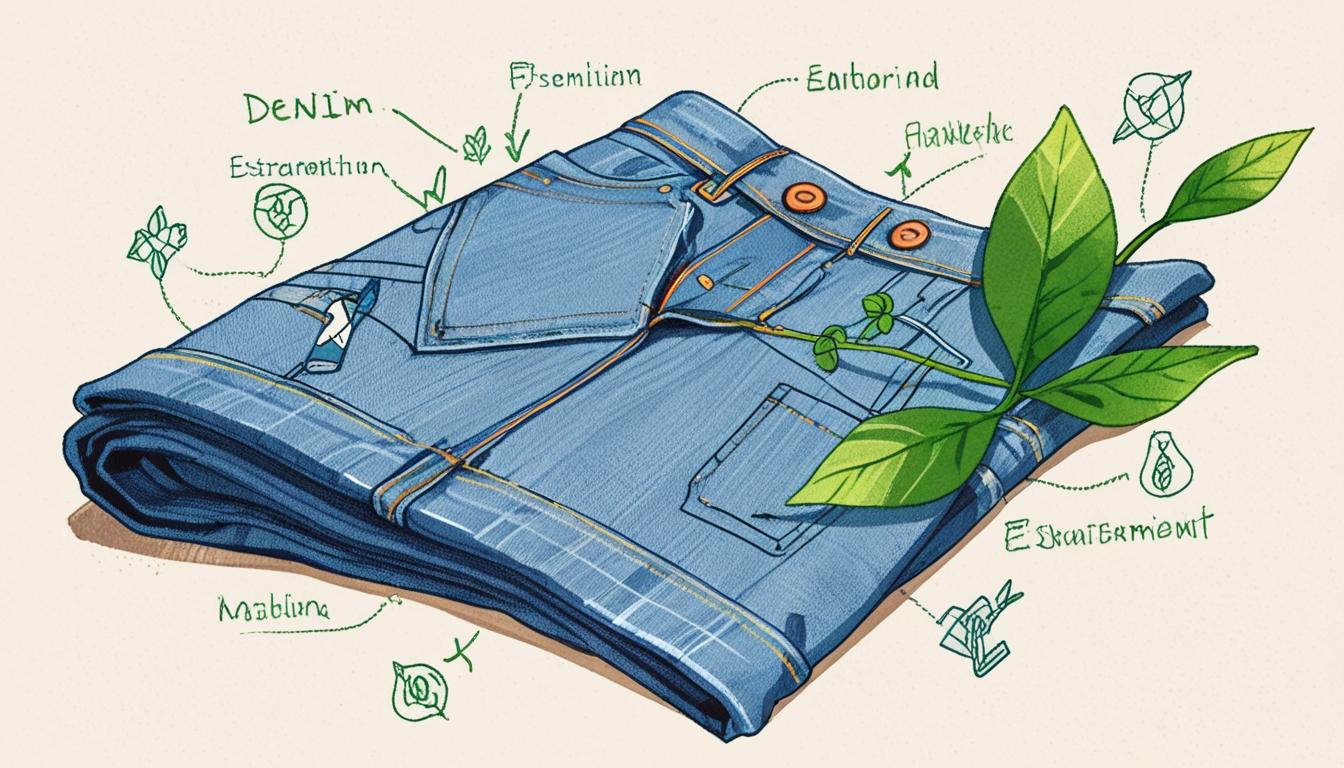As the fashion industry grapples with its mounting environmental footprint, there remains a critical misconception that sustainable technology is either inadequate or unavailable. This misunderstanding not only hampers progress but also clouds the potential for change already within reach. Dustin White, CEO of Lab Denim, argues that the real challenge lies not in developing new technologies, but in the reluctance of brands to embrace these advancements.
While there is a growing awareness of sustainability among consumers and stakeholders, the industry's transition has been disappointingly slow. This inertia is compounded by the legacy of entrenched practices within complex global supply chains. Challenges such as cost constraints and logistical barriers often serve as convenient excuses for inaction. Yet deeper still is a reluctance to confront established business models—an approach that seems paradoxical in an industry celebrated for its creativity. Many brands continue to prioritise profit margins over environmental responsibility, frequently outsourcing production to regions with lax regulations, thereby avoiding the culpability of fostering sustainable practices.
The environmental ramifications of this negligence are stark. Locations near manufacturing hubs suffer from polluted waterways, degraded soil, and air quality issues, disproportionately affecting populations least responsible for climate change. The effects of global warming, including erratic weather patterns and rising sea levels, threaten not only ecosystems but also the livelihoods of these vulnerable communities.
To begin to redress this imbalance, White asserts that a shift in mindset is essential. Sustainable choices need not be flashy marketing endeavours; instead, implementing these changes in a subtle manner can prove to be a prudent business strategy. Brands that commit to integrating sustainable technologies can do so incrementally, allowing for a smooth transition that does not disrupt existing operations or provoke significant backlash from stakeholders.
Central to fostering this transformation is a rigorous evaluation of the environmental impact associated with traditional practices. For instance, the chemical runoff from dyeing processes can have devastating long-term effects on ecosystems. Engaging environmental experts to detail these impacts helps brands identify the areas where meaningful changes can be made. This approach not only aligns with ecological objectives but also enhances business viability by appealing to increasingly conscientious consumers.
Implementing innovations in sustainable practices often requires a thoughtful, step-by-step approach. Smaller-scale pilot programs, such as limited-run product lines, allow companies to gauge environmental benefits and consumer reception while minimising risk. These initiatives can yield invaluable data that informs broader implementation strategies and identifies potential challenges, leading to more effective scaling.
Moreover, cultivating a corporate culture that empowers employees to champion eco-friendly technologies can instigate a wide-ranging ripple effect. When companies invest in educating their teams about sustainable practices, they foster a sense of shared mission and commitment. Employees who resonate with their brand’s purpose contribute not just to retention but emerge as advocates for transformative initiatives, propelling the industry's shift towards sustainability.
The discussion surrounding technology's role in fashion extends beyond mere production efficiencies. Innovations, from digitised manufacturing processes to automated finishing techniques, are redefining the parameters of sustainable fashion. Yet true progress requires bravery from industry leaders; waiting for the perfect solution risks stalling vital advancements and exacerbating environmental damage. In the face of evolving regulations and shifting consumer expectations, immediate action is not merely idealistic but an astute business move.
Challenges remain, particularly in navigating the economic hurdles posed by sustainability investments. Recent reports underline that U.S. retailers are reassessing their sourcing strategies amidst rising costs and market uncertainties. However, integrating renewable energy and energy-efficient technologies can prove essential for long-term survival and viability in an increasingly eco-conscious marketplace.
Ultimately, as brands such as Inditex demonstrate through pledges to invest substantially in textile innovation, the transition to a sustainable fashion industry is not a distant dream but an urgent necessity. By committing resources to develop innovative materials and practices, these leaders set critical benchmarks for others to follow. The potential benefits—environmentally, socially, and economically—are substantial. Now is the time to seize the moment for revolutionising fashion, not just for the industry's sake but for the health of our planet and future generations.
Reference Map
- Paragraphs 1, 2, 3, 4, 5, 6, 7: [1]
- Paragraph 8: [2]
- Paragraph 9: [3]
- Paragraph 10: [4]
- Paragraph 11: [5]
- Paragraph 12: [6]
- Paragraph 13: [7]
Source: Noah Wire Services
